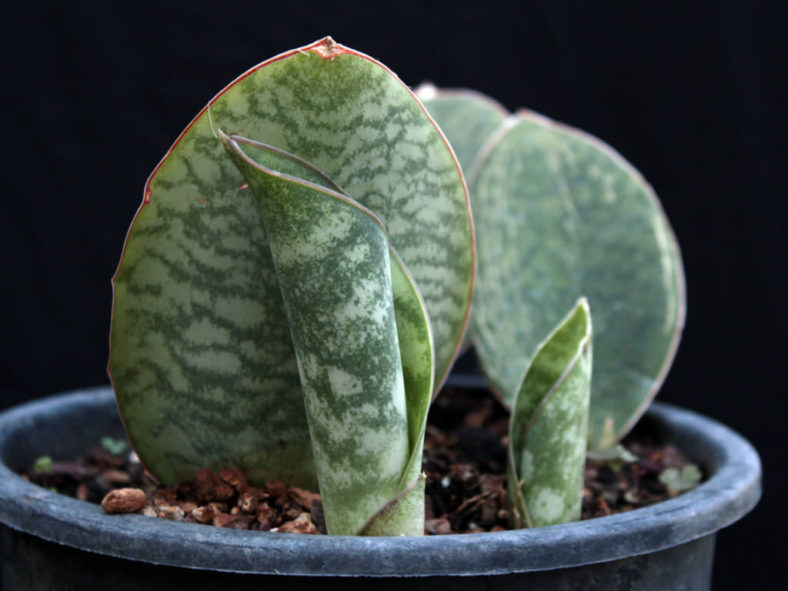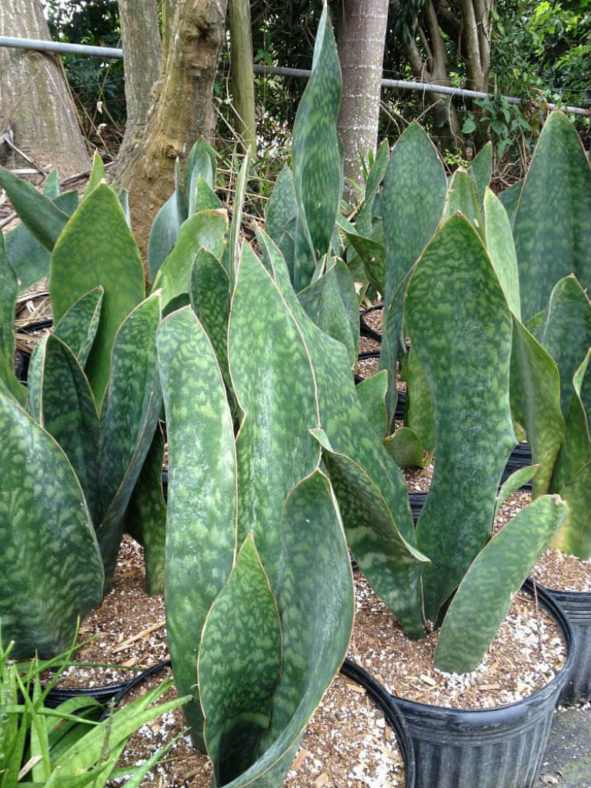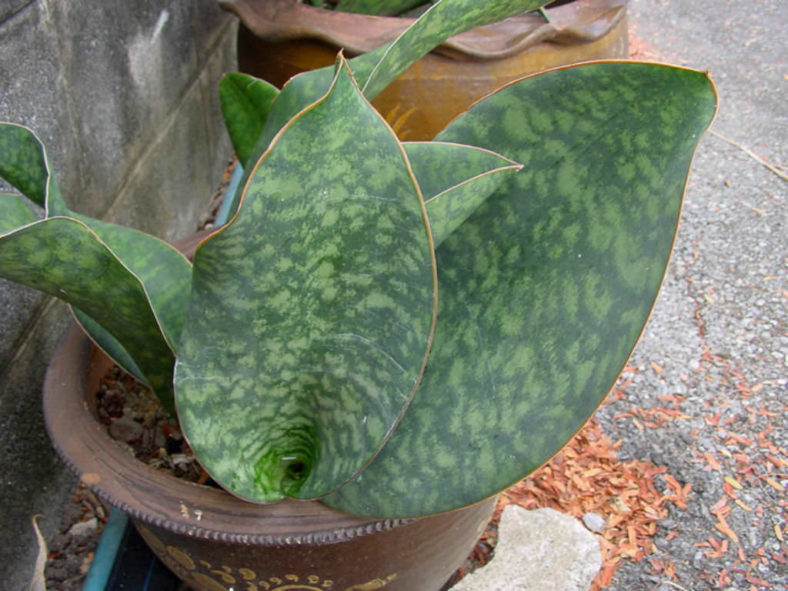Scientific Name
Dracaena masoniana (Chahin.) Byng & Christenh.
Common Name(s)
Mason's Congo, Whale Fin, Shark's Fin
Synonym(s)
Sansevieria masoniana
Scientific Classification
Family: Asparagaceae
Subfamily: Nolinoideae
Genus: Dracaena
Etymology
The specific epithet "masoniana" (pronounced "mas-oh-nee-AH-uh") honors Maurice Mason (1912-1993), a British amateur horticulturist and plant collector, who collected this species in what was called the Belgian Congo, now the Democratic Republic of the Congo.
Origin
Dracaena masoniana is native to central Africa.
Description
Dracaena masoniana, formerly known as Sansevieria masoniana, is a semi-succulent plant with wonderful, dark green leaves with smudged, light green spots and a unique, purple-banded sheath. The leaves can grow up to 4 feet (1.2 m) long and 10 inches (25 cm) wide, although reports indicate they can reach a length of up to 6 feet (1.8 m).
When grown in bright light, Dracaena masoniana forms a stalk with clusters of white flowers that arise from the center of the plant.

Forms of Dracaena masoniana
How to Grow and Care for Dracaena masoniana
Hardiness: USDA hardiness zones 10a to 11b: from 30°F (-1.1°C) to 50°F (10°C).
Place Sansevierias in moderately bright or filtered light. Good locations include a spot in front of a north-facing window or the front of a bright, sunny window covered by a sheer curtain. Although the plant tolerates low light, bright light brings out the colors of its leaves. However, intense light may cause the leaf edges to turn yellow.
Allow the soil to dry completely before watering, and then water deeply until water drips through the drainage hole. Allow the pot to drain, and discard the water in the saucer. Never allow the soil to become soggy; never let the pot stand in water. Water sparingly throughout the winter. Like most succulent plants that store water in their leaves, Sansevieria rots quickly in excessively wet soil.
Place the Sansevieria at an average room temperature. Protect the plant from drafts and cold temperatures, as it will be damaged at temperatures below 50°F (10°C).
Feed the plant once every three weeks throughout the summer. Use a general-purpose fertilizer for houseplants diluted to one-half the strength suggested on the container. Sansevieria is a light feeder, and too much fertilizer can cause the leaves to fall over.
Learn more in "How to Grow and Care for Sansevieria."
Links
- Back to genus Dracaena
- Succupedia: Browse succulents by Scientific Name, Common Name, Genus, Family, USDA Hardiness Zone, Origin, or cacti by Genus
Photo Gallery
Click on a photo to see a larger version.

